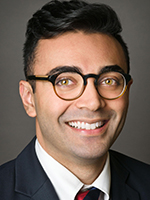The way we frame benefit and risk to our patients can have a huge impact on their health and lifestyle choices, argues Abraar Karan
 Imagine that an epidemic strikes and 600 patients are brought into the hospital. You are a physician confronted with the choice between two therapies: the first, antidote A, will save 200 people with 100% certainty. The second, antidote B, has a 33% chance of saving everyone, and a 66% chance of saving no one. Which would you pick? Through various studies of this type, we can predict that most people would prefer antidote A—the certainty of saving 200 lives is overwhelmingly convincing.
Imagine that an epidemic strikes and 600 patients are brought into the hospital. You are a physician confronted with the choice between two therapies: the first, antidote A, will save 200 people with 100% certainty. The second, antidote B, has a 33% chance of saving everyone, and a 66% chance of saving no one. Which would you pick? Through various studies of this type, we can predict that most people would prefer antidote A—the certainty of saving 200 lives is overwhelmingly convincing.
Now what if you were told that there were two new antidotes to choose from: antidote C and antidote D. Antidote C has a 100% chance of killing 400 people, while antidote D has a 33% chance that no one will die and a 66% chance that everyone will die. Which would you pick? In this scenario, most people would choose antidote D—after all, choosing antidote C, which would certainly kill 400 people, is hardly justifiable, right?
The reality, which you may have picked up on, is that the two scenarios are actually identical in the number of people who live and die, but the framing of the question is what leads us to feel that they are different. In the study of behavioral economics, this is explained by the phenomenon known as loss aversion: as humans, we are primed to feel losses nearly twice as heavily as we appreciate gains. Thus, hearing that through our choice 400 people would die is unconscionable enough to have us gamble on all 600 lives, even though when we are presented with a frame of saving 200 lives, 400 people were still going to die because of our choice.
The Nobel Prize winner Daniel Kahneman and his colleague Amos Tversky famously introduced these concepts in 1979 in their seminal work on prospect theory, and their application is still wholly relevant today. Framing is an extremely important aspect of health communication, and understanding it offers several opportunities for public health professionals and healthcare providers to influence the behaviors of their patients and community members in beneficial ways.
Framing a health decision as a loss or a gain depends largely on an individual’s perception of that action and its risk. For actions that we perceive as risky (one notable experiment being with mammography screening), a health message that presents the lack of action as an even greater risk is more effective. However, for actions that we don’t perceive as risky, presenting the action itself as beneficial has been shown to produce a better behavioral response. For instance, a low risk action such as using sunscreen would be best encouraged by touting its benefits, such as preventing skin cancer. However, for a patient who is afraid of vaccines, framing the conversation around the idea that not vaccinating is extremely dangerous and will almost certainly result in preventable infections for children and adults would be a better approach. To summarize these ideas, a loss frame makes individuals more risk seeking, while a gain frame is better for “riskless” decisions.
The idea of framing is particularly relevant in the primary care setting, in which physicians and nurses are constantly trying to change or improve their patients’ behaviors through counseling and discussion. Understanding the effects of framing as they relate to healthy eating is of particular salience given the obesity epidemic. Studies have shown that when people are told that a food item is “healthy”, they feel less full after eating it and often overcompensate by eating more of that or another item to the point at which the “healthy” nutritional benefit is diminished. However, if that same item is described in more appealing terms, such as “yummy” or “tasty,” people feel fuller after eating it.
It is truly astounding how powerful our words can be in shaping people’s reception of information. Herein lies an opportunity for primary care doctors and other health professionals, but it must be acted upon more systematically. The study of certain concepts in behavioral economics, such as framing, should be included in medical and nursing school curricula. If we can better harness these theories, it could reap substantial benefits, particularly in creating physicians who are better prepared to engage in smarter patient counseling and to provide motivation for behavioral change.
Framing and many other concepts that are central to the study of behavioral economics are increasing applicable in the healthcare setting. The use of framing and its impact need to be further studied—particularly when it comes to the sustainability of the outcomes it helps influence, such as behavior change.
Complementarily, clinicians and other providers need to do a better job at understanding the psychology of how their patients process health information. They need to understand and capitalize on the notion that even a small difference in the way something is said can have immense benefits for the health of their patients.
Abraar Karan is a physician and MPH candidate at the Harvard TH Chan School of Public Health in the Department of Health Policy and Management. He has worked to improve the health of marginalized communities in Africa, Latin America, and Asia. He is the editor of the book Protecting the Health of the Poor: Social Movements in the South. Twitter:@AbraarKaran.
Competing interests: None declared.
